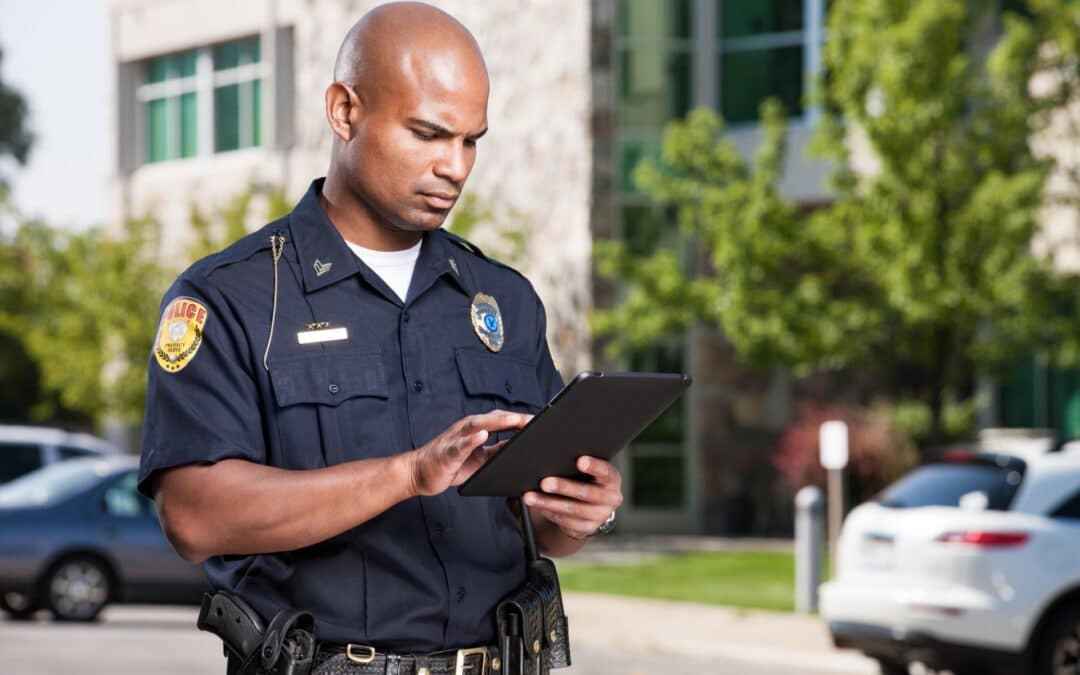Law enforcement has undergone tremendous change as a result of new technologies, procedures, and concepts. Across the globe, police and law enforcement organizations are leading the transition by experimenting with new technological breakthroughs, reacting to shifting situations, and incorporating observations from officers and community partners.
Emerging technologies that support revised operational concepts are the foundation of the innovations reshaping the current law enforcement landscape and making it possible for the connections and interventions that keep society secure.
Read on to discover five of the latest advances in technology that are changing law enforcement. We’ll cover the implementation of artificial intelligence programs, facial recognition, electronic monitoring advancements, augmented reality, virtual reality, and digital twin models.
Today’s Law Enforcement Technology
Technology is developing more quickly than ever before, and often, it seems like new programs, tools, and services are introduced every day. We have conveniences at the tips of our fingers that we never had in the recent past, but in addition to making our lives easier, technology is improving the way law enforcement works.
Across the US (and the globe), police and law enforcement organizations are transitioning to newer, more effective police measures thanks to modern technologies. Let’s take a look at some of the different innovative releases that are currently reshaping law enforcement as a practice.
1 – Digital Twins
“Digital twins” refer to computerized representations of real-world objects, such as buildings or street layouts. This technology enables the creation of digital copies of objects through in-depth data collection, sensors, and IoT systems.
Recently, the police department in Guangdong, China, worked with other local authorities to create a real-time map of the entire city. The map monitored incident locations, law enforcement contacts with the public, how police resources were allocated, actual and perceived threats, and recent calls.
The city’s digital twin uses visual data analytics and collects feeds from ten agencies within the government in order to provide the police service with a real-time overview of the goings on in Guangdong. The map includes city layout segments, building structures, various routes, response times, and the like.
This model, and models like it, are designed to evaluate police responses to various situations, as well as allocate resources as needed when addressing routine city issues. The ultimate goal is to improve police interactions and resources in ways that help protect the public as effectively as possible.
2 – Virtual and Augmented Reality
Augmented and virtual reality programs are already making policing easier when it comes to training and day-to-day interactions between police and civilians. Axom created one such program with the intention of helping police defuse situations and interact with members of the public who have various health conditions (such as dementia or hearing disabilities).
In Oklahoma, police are using a law enforcement system called Apex Officer to properly handle situations in which a mental health crisis is known or suspected. The system works by providing the police service member with video resource walls they can use to properly assess and react to sensitive situations.
3 – Electronic Monitoring Systems
Electronic monitoring systems are by no means a new piece of technology, but thanks to technological advancements, these monitoring systems have become more accurate and reliable. These new models allow offenders to participate in house arrest penalties for minor offenses rather than forcing them into jail or prison.
The accuracy and reliability of these new monitoring systems makes it easy for probation and house arrest management officials to keep a watchful eye on the offender. With new audio, video, and motion monitoring, ensuring that the individual stays where he or she is assigned has become a much simpler task than it was when electronic monitoring was new.
4 – Facial Recognition Programs
CCTV and facial recognition software used to be a technological component that only existed in movies, but it has since become a reality.
ShotSpotter, a new piece of technology being utilized by Chicago police, triangulates information in order to pinpoint the exact location where recent gunfire took place. With this technology, police are better able to patrol at-risk areas and conduct gunshot investigations by evaluating the ShotSpotter data and combining it with license plate detection equipment to locate offenders.
Additionally, new facial recognition software has been applied in various precincts to reduce crime rates. For example, when utilized during large gatherings, facial recognition technology identifies individuals who are wanted by law enforcement by matching scans of their faces against offender databases.
Border Patrol officers are using similar technology, along with body language sensors to assess a visitor’s physical and psychological traits in order to determine whether they’re likely or unlikely to be entering the US illegally.
5 – Artificial Intelligence Detections
Finally, IBM and Munich Innovation Labs are working on artificial intelligence programs that aim to help law enforcement in the following ways.
- Detecting Hate Speech: AI is being used to gather threat intelligence from both internal and external data sources in order to pick up on and pinpoint sources of potential hate speech risks.
- Automating Processes: These collaborative technologies are also designed to make it easy to use, understand, and automate. This way, these crime-prevention tools and programs can work together without errors or delays.
- International Collaboration: Data collection and AI work together to create comprehensive analytical information that can be shared between law enforcement groups across the globe. This enables easier collaboration between the legal systems of various participating countries.
In order to facilitate a more innovative, effective law enforcement landscape, one needs to have a thorough understanding of both the history of law enforcement and the trends influencing it. With training and proper technological implementations, the law enforcement agencies of the future will be better equipped to prevent crimes, address situations, and help keep communities safe overall.
For more on police tech innovations, discover the latest in police and emergency vehicle upfitting capabilities at TCS Upfitting. Take a look at how our team is upgrading law enforcement vehicles from the inside out with push bumpers, equipment trays, drone command centers, lighting systems, and much more.


